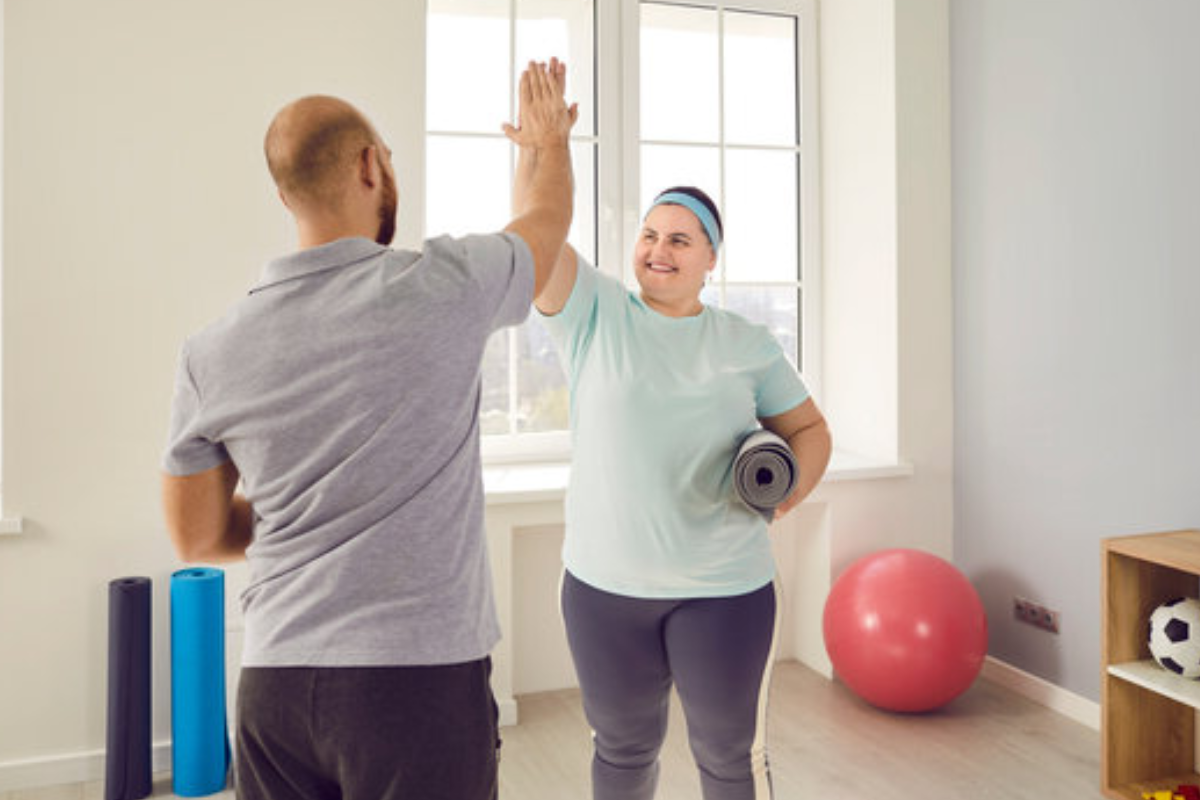Losing weight after 50 can feel like an uphill battle. As we age, our bodies undergo significant changes that make weight loss more challenging. Metabolism slows down, muscle mass decreases, and hormonal shifts can lead to stubborn fat accumulation. According to Dr. Holly Wyatt, a renowned obesity researcher, “After 50, the body’s ability to burn calories efficiently diminishes, which means you need to be more strategic about your approach to weight loss.”
However, these challenges don’t mean losing weight after 50 is impossible. In fact, with the right strategies, it’s entirely achievable. The key lies in understanding these age-related changes and adopting proven methods tailored to your body’s needs. This article will explore five effective strategies to help you succeed in your weight loss journey after 50, ensuring you stay healthy, active, and confident.
By focusing on sustainable habits and embracing a holistic approach, you can overcome the unique hurdles of losing weight after 50 and achieve lasting results. Let’s dive into the first step toward your success.

Strategy 1: Focus on Nutrition for Sustainable Weight Loss
When it comes to losing weight after 50, nutrition plays a pivotal role. As metabolism slows with age, the quality of the food you consume becomes even more critical. A balanced diet rich in nutrient-dense foods can help you maintain energy levels, support muscle health, and promote fat loss.
Dr. David Ludwig, a professor of nutrition at Harvard University, emphasizes, “After 50, it’s not just about eating less—it’s about eating smarter. Focus on whole, unprocessed foods that nourish your body and keep you full longer.”
Here are some practical tips to optimize your nutrition for sustainable weight loss:
- Prioritize Protein: Protein helps preserve muscle mass, which is essential for maintaining a healthy metabolism. Include lean sources like chicken, fish, beans, and tofu in your meals.
- Choose Whole Grains: Swap refined carbs like white bread for whole grains such as quinoa, brown rice, and oats. These provide sustained energy and keep blood sugar levels stable.
- Load Up on Vegetables: Vegetables are low in calories but high in fiber, vitamins, and minerals. Aim to fill half your plate with colorful veggies at every meal.
- Control Portion Sizes: Use smaller plates and be mindful of portion sizes to avoid overeating. Eating slowly can also help you recognize when you’re full.
- Stay Hydrated: Sometimes thirst is mistaken for hunger. Drink plenty of water throughout the day to stay hydrated and curb unnecessary snacking.
By focusing on these dietary adjustments, you can create a sustainable eating plan that supports your weight loss goals after 50. Remember, small, consistent changes in your diet can lead to significant long-term results.
Strategy 2: Incorporate Strength Training to Boost Metabolism
One of the most effective ways to combat the natural decline in metabolism after 50 is through strength training. As we age, we lose muscle mass—a process called sarcopenia—which slows down our ability to burn calories. According to Dr. Gabrielle Lyon, a functional medicine physician specializing in muscle-centric medicine, “Strength training is not just about building muscle; it’s about preserving your metabolic health and independence as you age.”
Strength training helps rebuild and maintain muscle, which in turn boosts your resting metabolic rate. This means you’ll burn more calories even when you’re not exercising. Additionally, it improves bone density, balance, and overall strength, reducing the risk of injuries.
Here are some beginner-friendly strength training exercises to incorporate into your routine:
- Bodyweight Exercises: Start with squats, lunges, and push-ups. These exercises use your own body weight to build strength and require no equipment.
- Resistance Bands: These are excellent for beginners and provide a low-impact way to build muscle. Try banded rows, chest presses, and leg lifts.
- Light Dumbbells: Incorporate dumbbell exercises like bicep curls, shoulder presses, and deadlifts. Begin with lighter weights and gradually increase as you build strength.
- Core Workouts: Strengthen your core with planks, Russian twists, and bird dogs. A strong core supports overall stability and posture.
Aim to strength train at least two to three times per week, focusing on all major muscle groups. As Dr. Lyon advises, “Consistency is key. Even small, regular efforts can lead to significant improvements in muscle mass and metabolism.”

Strategy 3: Prioritize Sleep and Stress Management
Sleep and stress are often overlooked factors in weight loss, yet they play a crucial role, especially after 50. Poor sleep and chronic stress can disrupt hormones like cortisol and ghrelin, which regulate hunger and fat storage. Dr. Matthew Walker, a sleep scientist and author of Why We Sleep, explains, “Sleep deprivation alters the hormones that control appetite, making you more likely to crave high-calorie, unhealthy foods.”
Similarly, stress can lead to emotional eating and weight gain. When cortisol levels are elevated, the body tends to store fat, particularly around the abdomen. Managing these factors is essential for successful weight loss after 50.
Here are practical tips to improve sleep quality and reduce stress:
- Establish a Sleep Routine: Go to bed and wake up at the same time every day, even on weekends. Create a calming bedtime ritual, such as reading or taking a warm bath.
- Limit Screen Time: Avoid screens at least an hour before bed, as blue light can interfere with melatonin production, the hormone that regulates sleep.
- Practice Relaxation Techniques: Incorporate mindfulness practices like meditation, deep breathing, or yoga to reduce stress levels.
- Stay Active: Regular physical activity can improve sleep quality and reduce stress. Even a daily walk can make a significant difference.
- Create a Sleep-Friendly Environment: Keep your bedroom cool, dark, and quiet. Invest in a comfortable mattress and pillows to enhance sleep quality.
By prioritizing sleep and stress management, you’ll create a healthier environment for weight loss after 50. As Dr. Walker emphasizes, “Sleep is the foundation of health, and without it, all other efforts to lose weight may fall short.”
Strategy 4: Stay Active with Low-impact Exercises
Staying active is essential for losing weight after 50, but high-impact exercises may not be suitable for everyone. Low-impact activities, such as walking, swimming, or yoga, are gentler on the joints while still providing significant health benefits. Dr. Michael Joyner, a physiologist at the Mayo Clinic, notes, “Low-impact exercises are ideal for older adults because they reduce the risk of injury while improving cardiovascular health and mobility.”
These activities not only help burn calories but also improve flexibility, balance, and overall fitness, making them perfect for maintaining an active lifestyle after 50.
Here are some effective low-impact exercises to incorporate into your routine:
- Walking: Aim for at least 30 minutes of brisk walking daily. It’s simple, accessible, and effective for burning calories and improving heart health.
- Swimming: Swimming is a full-body workout that’s easy on the joints. It’s particularly beneficial for those with arthritis or joint pain.
- Yoga: Yoga enhances flexibility, strength, and mindfulness. Look for beginner-friendly classes or online tutorials to get started.
- Cycling: Whether on a stationary bike or outdoors, cycling is a great way to boost cardiovascular fitness without straining your joints.
- Tai Chi: This gentle form of exercise improves balance, coordination, and relaxation, making it ideal for older adults.
Consistency is key when it comes to staying active. As Dr. Joyner advises, “Find activities you enjoy and make them a regular part of your routine. Even small amounts of daily movement can add up over time.”
Strategy 5: Monitor Progress and Adjust Your Plan
Tracking your progress is a crucial step in achieving weight loss after 50. It helps you stay motivated, identify what’s working, and make necessary adjustments along the way. As Dr. Spencer Nadolsky, a board-certified obesity and lipid specialist, explains, “Monitoring your progress allows you to see trends and make informed decisions about your weight loss plan.”
Here are some practical ways to monitor your progress and adapt your strategies:
- Keep a Journal: Record your meals, exercise routines, and how you feel each day. This can help you identify patterns and areas for improvement.
- Use Technology: Apps and wearable devices can track your steps, calories burned, and even sleep quality, providing valuable insights into your habits.
- Measure Beyond the Scale: While weight is one indicator, also track other metrics like body measurements, how your clothes fit, and energy levels.
- Set Realistic Goals: Break your weight loss journey into smaller, achievable milestones. Celebrate each success to stay motivated.
- Be Flexible: If a particular strategy isn’t working, don’t be afraid to tweak it. For example, if a certain exercise causes discomfort, try a different activity.
Regularly reviewing your progress ensures you stay on track and make adjustments that align with your body’s changing needs. As Dr. Nadolsky emphasizes, “Weight loss is not a linear process. It’s about finding what works best for you and being patient with the journey.”
Conclusion
Losing weight after 50 may come with unique challenges, but it’s entirely achievable with the right strategies. By focusing on nutrition, incorporating strength training, prioritizing sleep and stress management, staying active with low-impact exercises, and monitoring your progress, you can create a sustainable plan tailored to your needs.
Remember, the key to success is consistency and patience. As Dr. Holly Wyatt aptly puts it, “Small, consistent changes lead to lasting results.” Embrace these proven strategies, celebrate your progress, and enjoy the journey toward a healthier, more vibrant you after 50.
